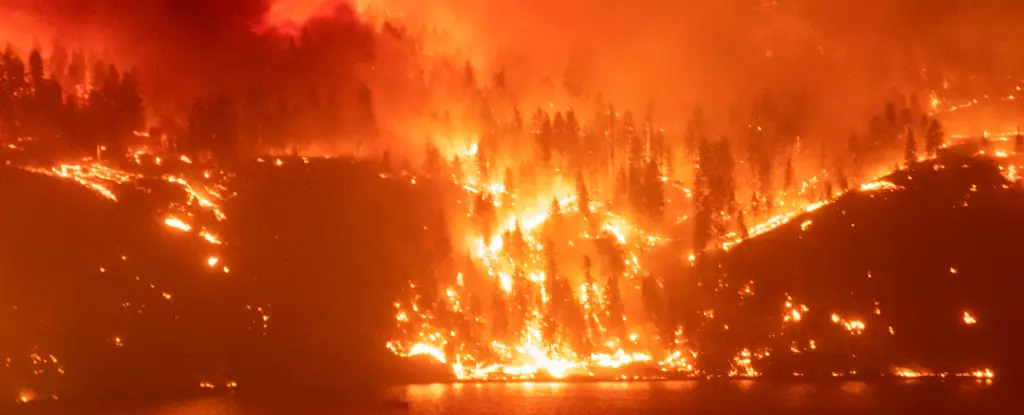Wildfires are not an isolated phenomenon limited to California; they represent a growing global crisis that has engulfed regions from the southern Appalachians to Australia, and from Greece to Canada. Over the past few years, we have witnessed rampant fires consuming vast swathes of land, leaving landscapes scarred and communities vulnerable. These destructive events raise crucial questions about the future—questions that suggest we may be entering a period marked by unprecedented challenges and uncertainties in fire management and environmental consequences.
The intimacy between humanity and fire has existed for millennia, tracing back to our species’ earliest days. Humanity’s evolutionary narrative intertwines directly with its relationship to fire, a tool once mastered for warmth and cooking that has now morphed into a force of environmental destruction. The history of fire highlights an inevitable truth: our existence has dramatically altered the balance of ecological systems, ultimately contributing to a destructive cycle where fire, climate change, and human activities converge to set the stage for catastrophic wildfires.
Historically, human practices have changed the very fabric of ecosystems, making landscapes more susceptible to fire. Functions we once could not comprehend now seem integral to our daily lives—from agricultural practices to urban development. The end of significant glaciation brought about the establishment of human civilizations, but it also initiated a shift in ecological dynamics, one which savvy humans undertook with torches, axes, and eventually industrial technology.
Recent studies suggest that factors like massive depopulation in the Americas allowed natural vegetation to reassert itself. This phenomenon may have inadvertently contributed to a climate cooling period known as the Little Ice Age. However, as humans began to tap into fossil fuels to power their modern lifestyles, a fundamental shift ensued. Fossil fuel combustion reshaped not only how we engage with fire but how we confront the impacts of fire on the environment. This pyric transition denotes a drastic scale-up of combustion, enabling human-made fires to challenge the traditional ecological checks in ways we’ve never encountered before.
The influence of fossil fuels extends beyond mere energy supply; it has redefined our landscapes. Abandoning traditional fire management practices, contemporary society increasingly resorts to aggressive suppression tactics using technology and industrial resources—pumps, bulldozers, and aircraft—to combat wildfires that have transformed into highly destructive forces, far beyond anything seen in prior times.
As we attempt to dissect the complex relationship of fire with urbanization and land use, we uncover layers of interactions that resemble a deadly chafer—both climate change and human activities shape our environments, feeding off one another and intensifying their effects. This dynamic is alarming, as it suggests that our efforts to control fire through land management and urban design may inadvertently bolster the conditions that enable wildfires to thrive.
Wildfires have become megafires—sweeping infernos that defy our previous experiences with fire. The shift in the landscape, fueled by various land-clearing practices, has led to an alarming accumulation of organic material that ultimately turns into fodder for these massive fires. Policy-makers had long believed that suppressing all fire would lead to safer environments, yet this approach has produced the opposite effect: a dangerous build-up of combustibles, setting the stage for uncontrollable blazes.
Now, humanity faces a paradigm shift: a potential era of the Pyrocene, drawing parallels with past climatic epochs dominated by ice ages. Just as those frozen epochs defined Earth’s landscapes, the current situation may see the rise of fire as the dominant geological and ecological force, reshaping ecosystems and altering human experiences.
Dystopian narratives frequently mention ice as a threat, but as fire becomes increasingly intertwined with the environmental challenges of our era, it may take center stage as an ongoing hazard. A world marked by rising temperatures, severe droughts, and protracted wildfire seasons could become our new normal, reshaping everything from climate policy to our collective psyche.
As we round the corner into the next phase of Earth’s transformation, we must confront the implications of our past choices vis-à-vis fire management. The margins appear bleak, echoing the unsettling reality that fire, once characterized as a mere tool, is becoming a defining line in the story of the Anthropocene—a period heavily influenced by human interventions impacting Earth’s ecosystems.
The pressing need for a narrative shift in our relationship with fire has never been more urgent. Science, policy, and cultural narratives must unite to foster a deeper understanding of fire’s role in the ecology and the Anthropocene. Recognizing fire as a natural process and integrating it thoughtfully into land management and climate action strategies will be crucial in navigating these challenging waters. The ember sparks of change are upon us; it is time to embrace a new era that acknowledges fire not just as a foe but as a significant player in Earth’s ongoing narrative.


Leave a Reply